This Week at Angama #28
17 August 2018 | This Week at Angama | Graham Wood
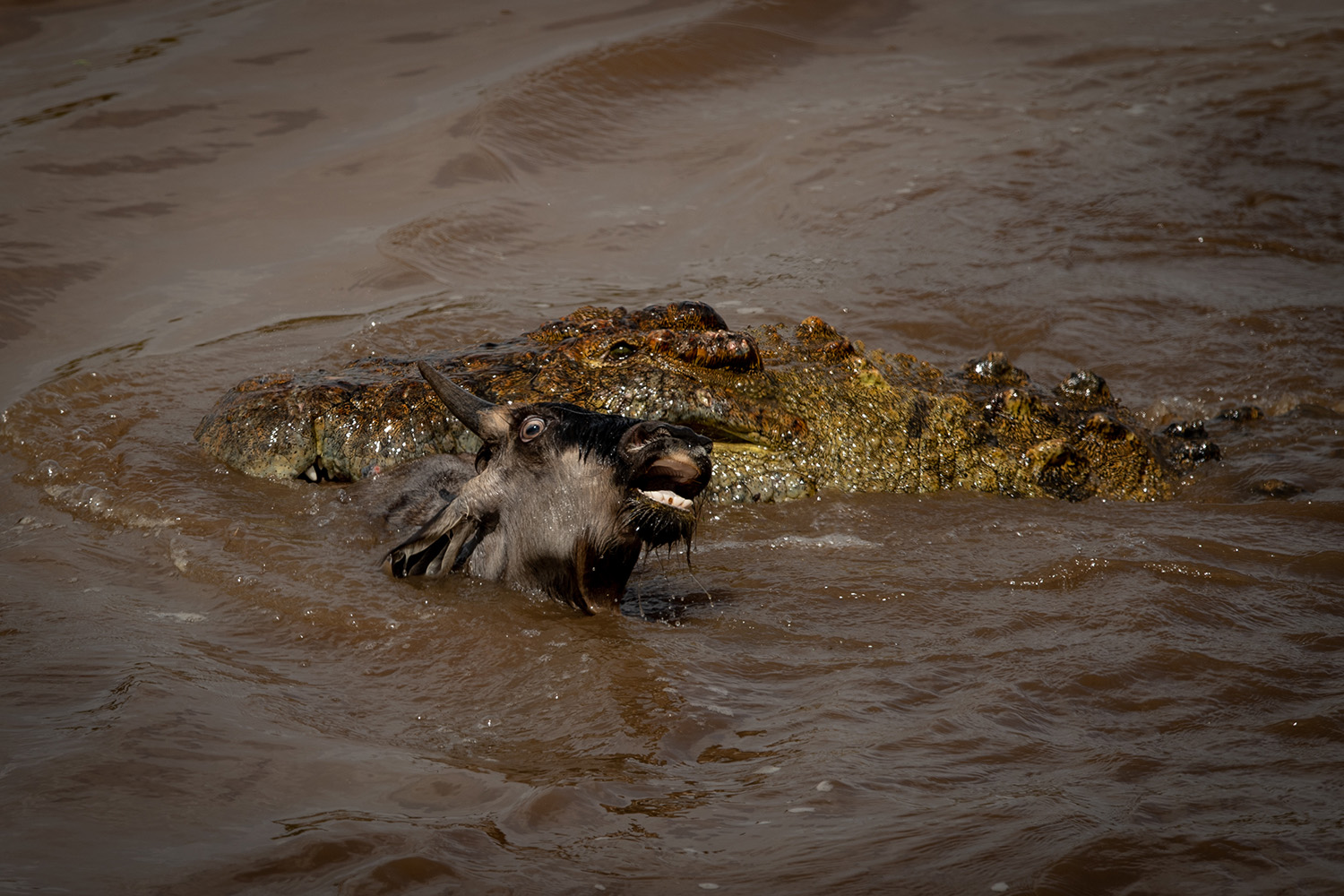
‘Without life, there is no death. Without Death there is no life’
The migration is in full swing, the wildebeest are arriving in large numbers, and every day holds excitement as one descends into the Mara from camp. No matter how many times you have seen it, the Migration brings with it a sense of awe. What a privilege it is to behold the circle of life, in what I consider one of the greatest wildlife sanctuaries on the planet. Long days with one’s camera are a given.
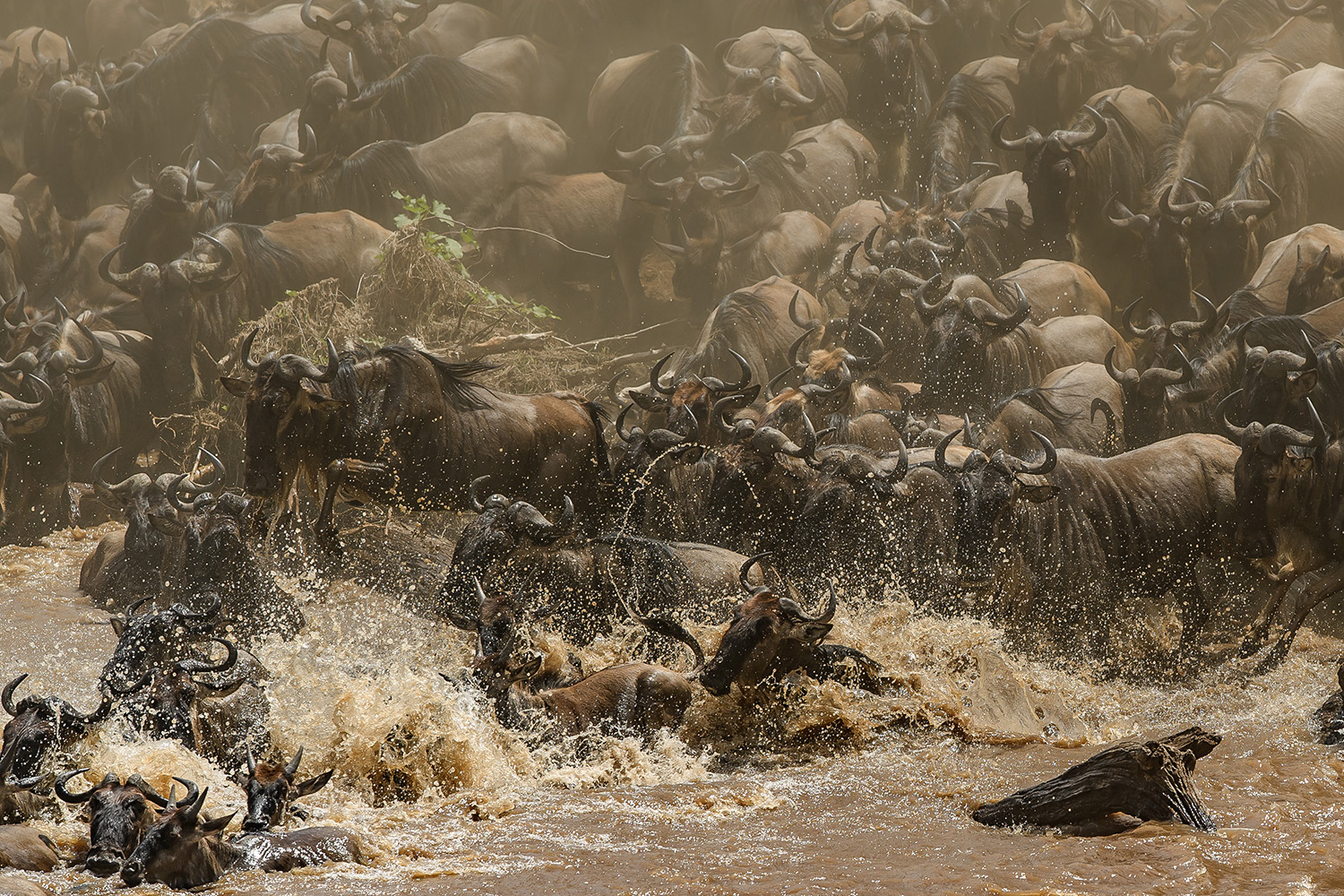
Wildebeest crossings typically start orderly and quickly descend into chaos as the urgency to stay with the herd ensues. A high f-stop (shut down aperture) ensures you capture the detail. Make sure the ISO is well set to ensure that your shutter speed is fast to enough to capture that detail. [f6.3 ISO 280 1/1000]
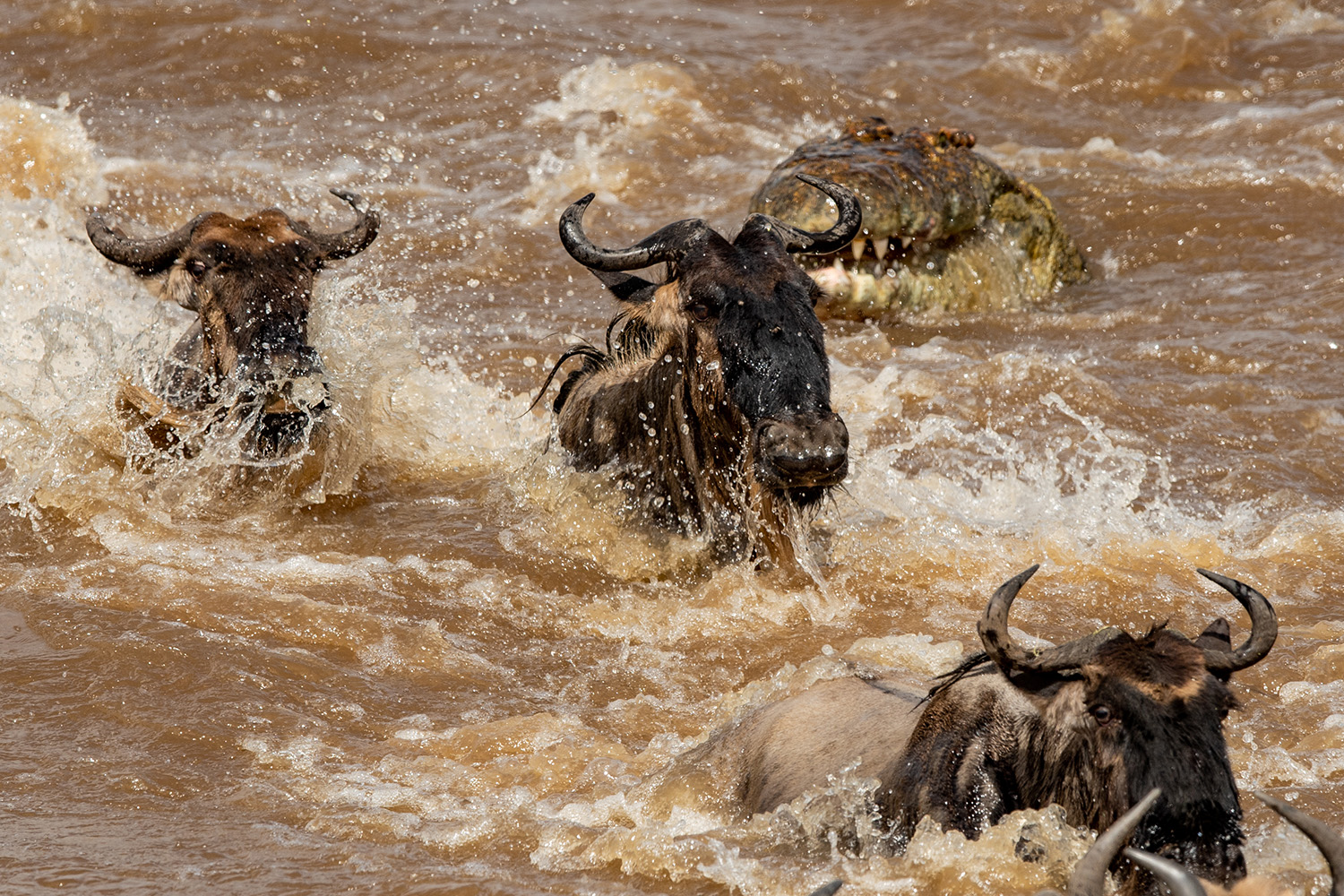
One thing with river crossings is that they are unpredictable. You can wait one minute, you can wait two hours, but you can expect excitement and drama once it starts. Crocodiles arrive at the scene in seconds. This one tracking the crossing wildebeest was huge. I like this image, as the prehistoric predator is not even noticeable at first glance, and the wildebeest is clearly unaware of the impending threat. [f7.1 ISO 280 1/1000]

Lions were out in large numbers, and I was amazed at the number of mating pairs we saw from different prides within the Triangle. We saw five different females over the week. Lions’ gestation typically lasts around 110 days, so November and December will hold exciting times as we expect the next generation of cubs. [f4.5 ISO 200 1/2000 +1/3]
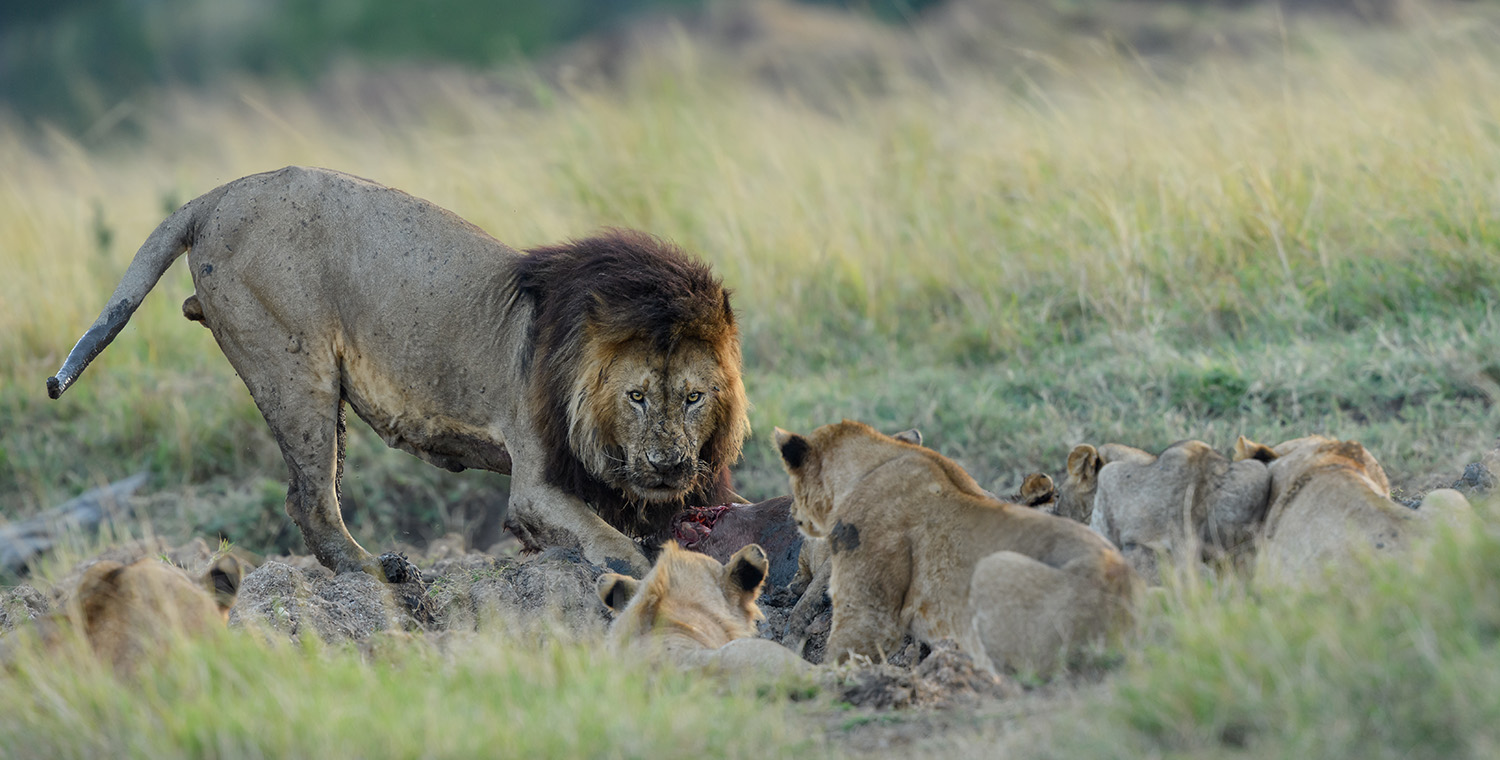
During the falling light of early evening, Shorty, one of the dominant males in the Angama pride, claims a kill he did not make. The cubs look on in desperation as their meal for the day disappears. Nature is rarely fair. You’ll notice the high ISO at 1600, don’t be afraid to push the ISO to maintain that shutter speed, especially in the newer models hitting the market. A grainy image is better than a badly blurred image. [f5.6 ISO 1600 1/400]

There is no substitution for good light. Titus and I had descended early into the park, and noticed the tawny colour only a lion throws off during that magical golden hour. She was slowly hunting a herd of hartebeest, which ended in success. [f2.8 ISO 220 1/1000]

The commotion of their mother bringing down a hartebeest in long grass alerted these 3 young lions. They quickly scrambled onto a termite mount to get a better viewpoint. [f.5.6 ISO 360 1/1100]

My favorite shot from the week. Completely unexpected, I noticed a maribou stork descending on the herd down to what was likely a dead wildebeest. I picked up the camera and shot. While not pin sharp, the picture and story I envisaged came out better. The mottled wings, the menacing descent, the undertaker bird was arriving. Always have your camera ready to shoot. [f5.6 ISO 280 1/1000]
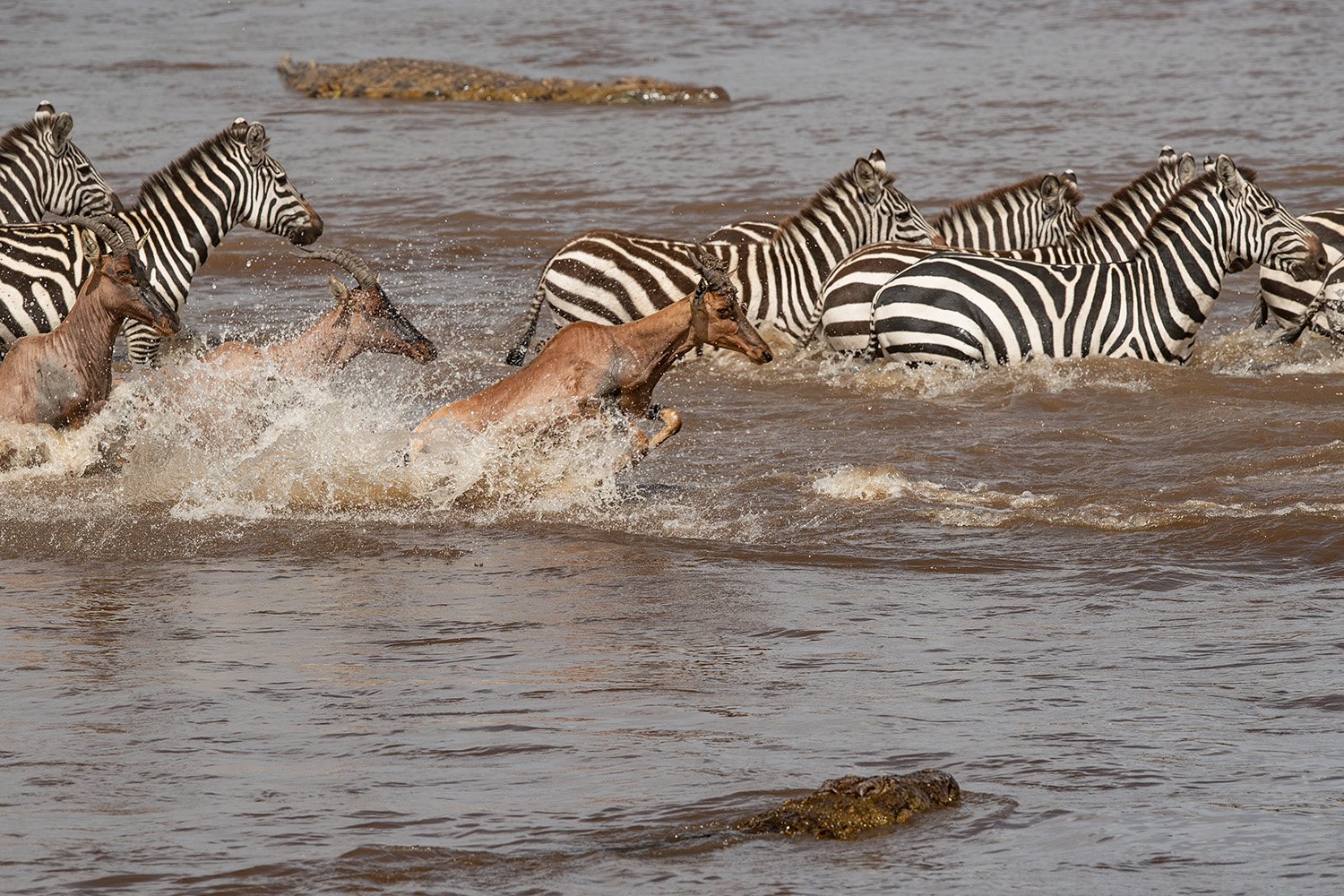
It’s not just wildebeest that run the gauntlet of life and death flanked by massive crocodiles. We were treated to a zebra and topi crossing. [f7.1, ISO 220 1/1000]
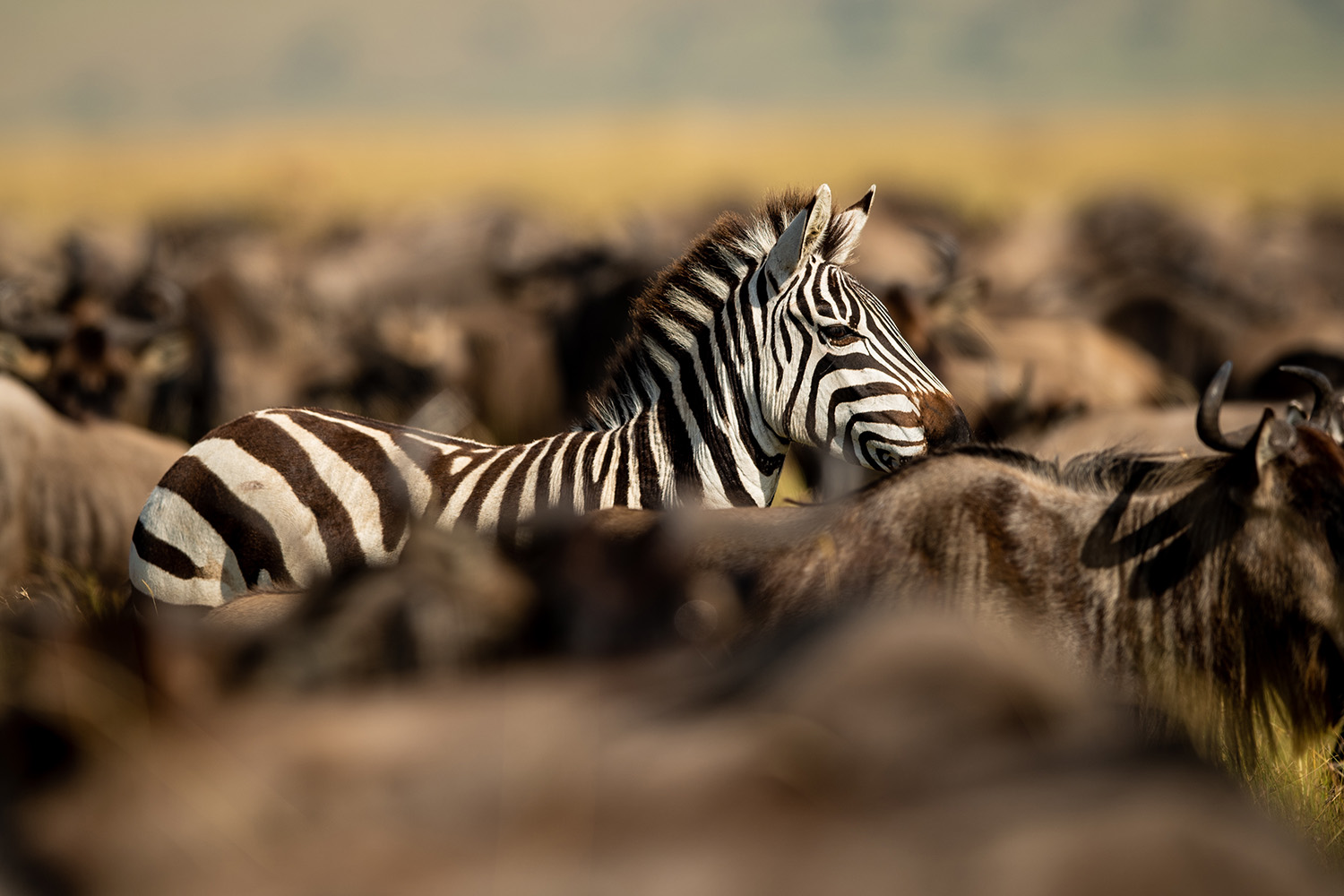
Contrast in the herd. Wildebeest herds are pouring through into the Mara Triangle, and are often accompanied by zebra, eland and topi. The contrast of stripes hiding within the brown black bodies of the wildebeest herds makes for a fresh and beautiful scene, and the composition of the zebra in the middle of the frame, pulls your eye in. [f3.2 ISO 100 1/1250]

A common scene one never forgets: wildebeest on the march, as they snake through the long grasses of the Mara. [125mm, f8, ISO 125, 1/500]
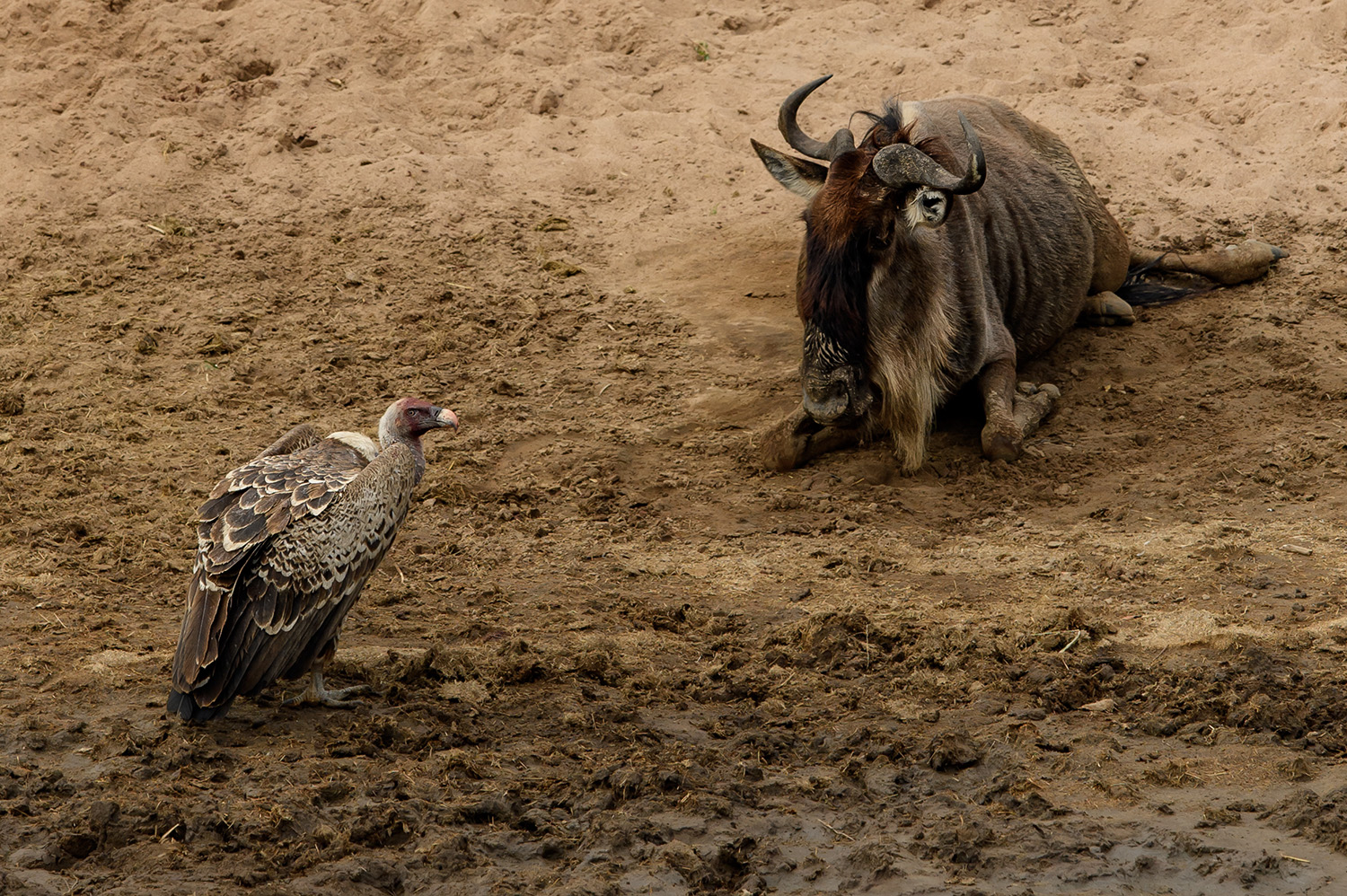
The reality of nature and an incredibly difficult scene to photograph. A wildebeest lies with its back legs broken, staring death in the face. It’s fate is determined, but it refuses to give in. [f5.6 ISO 560 1/1000]
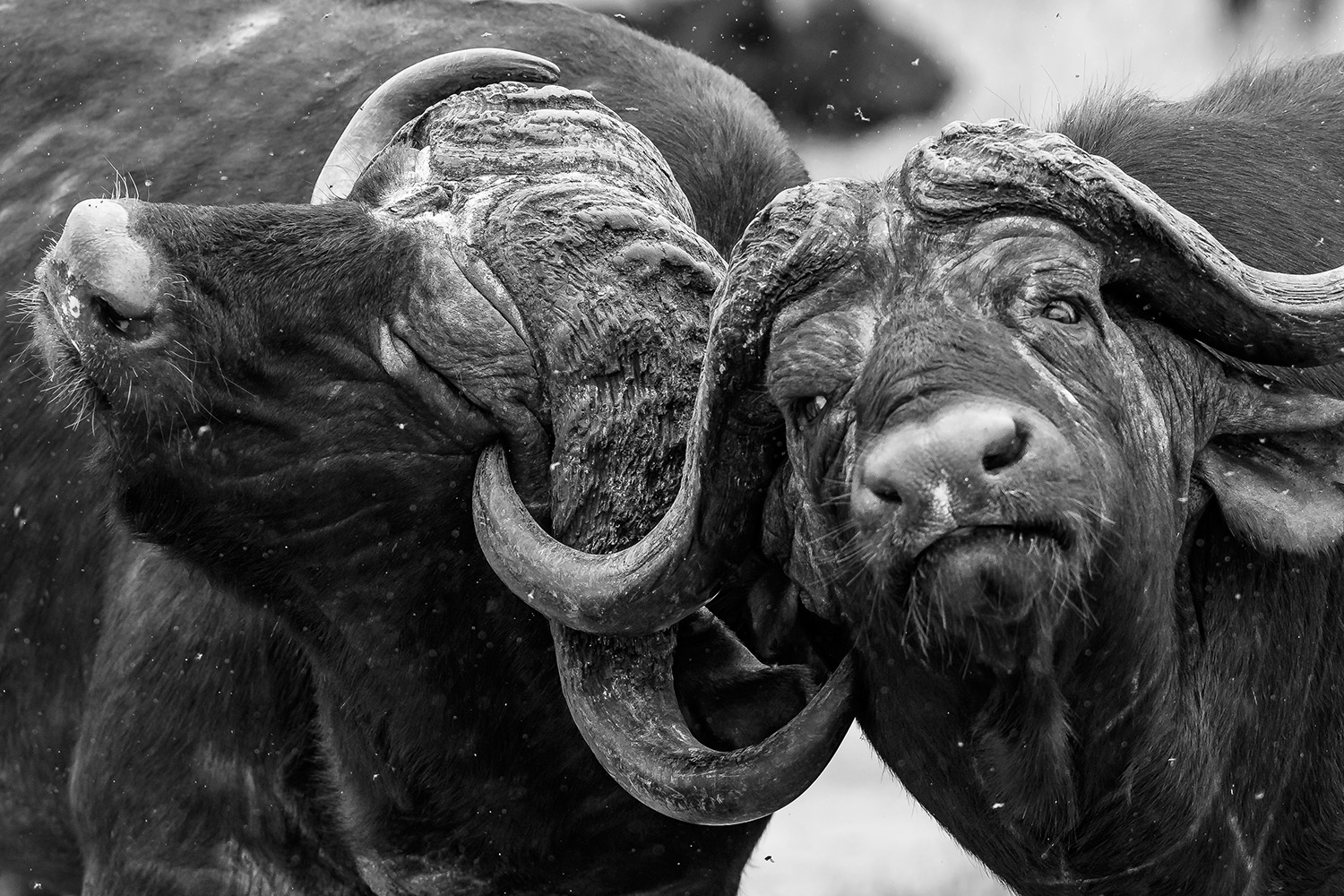
Large buffalo herds were present wherever we went in the Triangle. These two males were aggressively jostling with each other in the marsh below camp. [f5.6 ISO 500 1/2000 ]
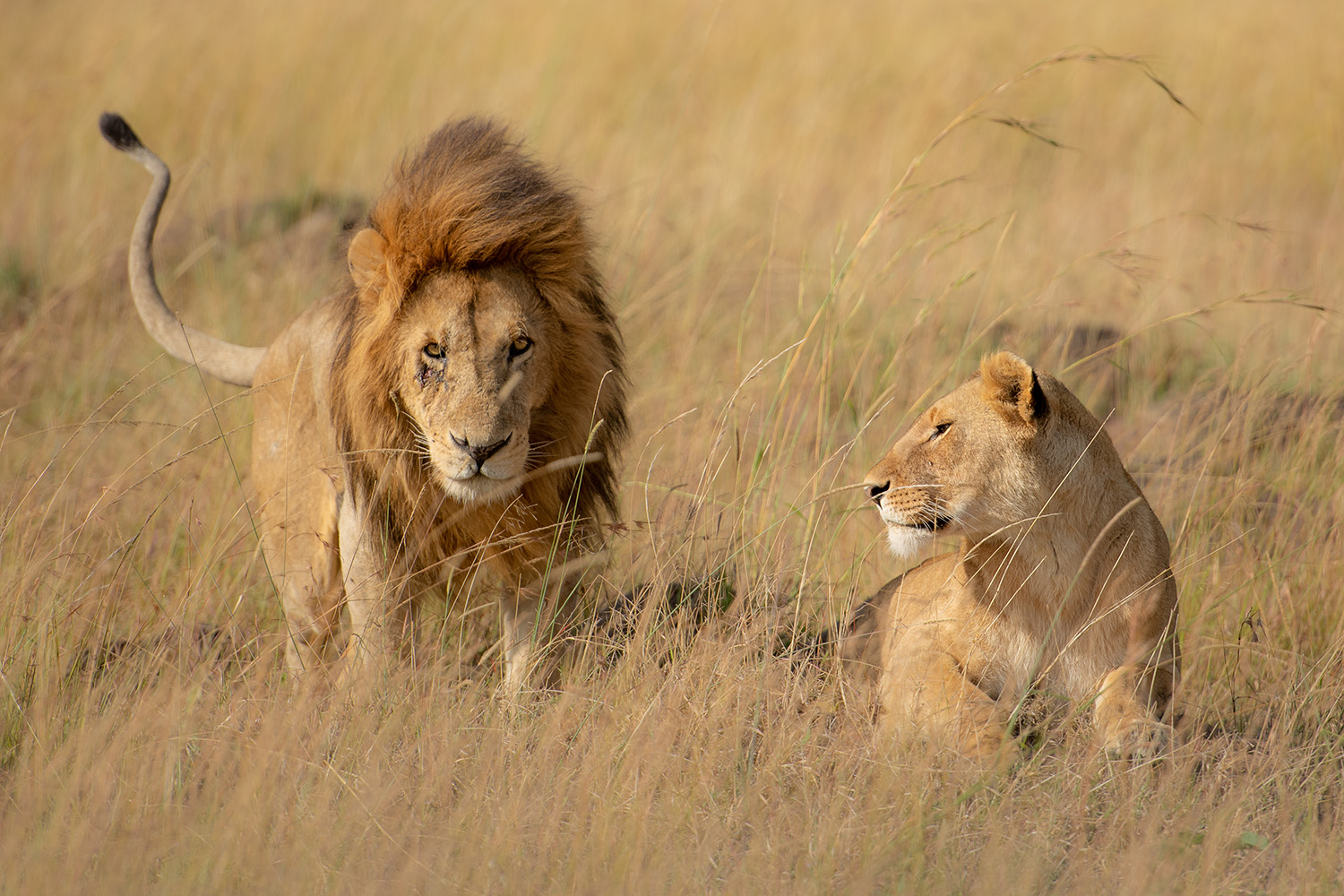
One of the mating pairs we observed: the light was tough and starting to get bright, and the lions were bleeding into the grass. The plan for me was to create depth, and get that grass blurred, I waited for the male to be at the same distance from me as the female and opened up the aperture. The second trick was to shoot the photo in high key – meaning I overexposed the image. I find this blows the whites out of the grass, and creates that beautiful blur you see in the front and back of the image. Despite the light being bright, if I had underexposed, I would have had more clarity and definition in the grass – this was not what I wanted. [f3.2 ISO 100 1/1600]

Adam wrote about positioning in his recent blog, and this is so true. Composition can be everything. Being ahead of this young lion’s movements enabled this amazing scene. Quintessential Mara magic. [f4 ISO 100 1/1600]

One of the great things as a photographer is the ability to shoot wide, and the Mara offers this opportunity. Simple shots can be effective and portray the beauty of the magical landscape. [f3.5 ISO 100 1/500]

Vultures are so important to the eco-system. This amazing Lappet Faced vulture stood tall and proud, despite our vehicle being very close. It’s a simple portrait, but his regal stance, and impressive beak being hit by light, made it work. [f4 ISO 100 1/1000]
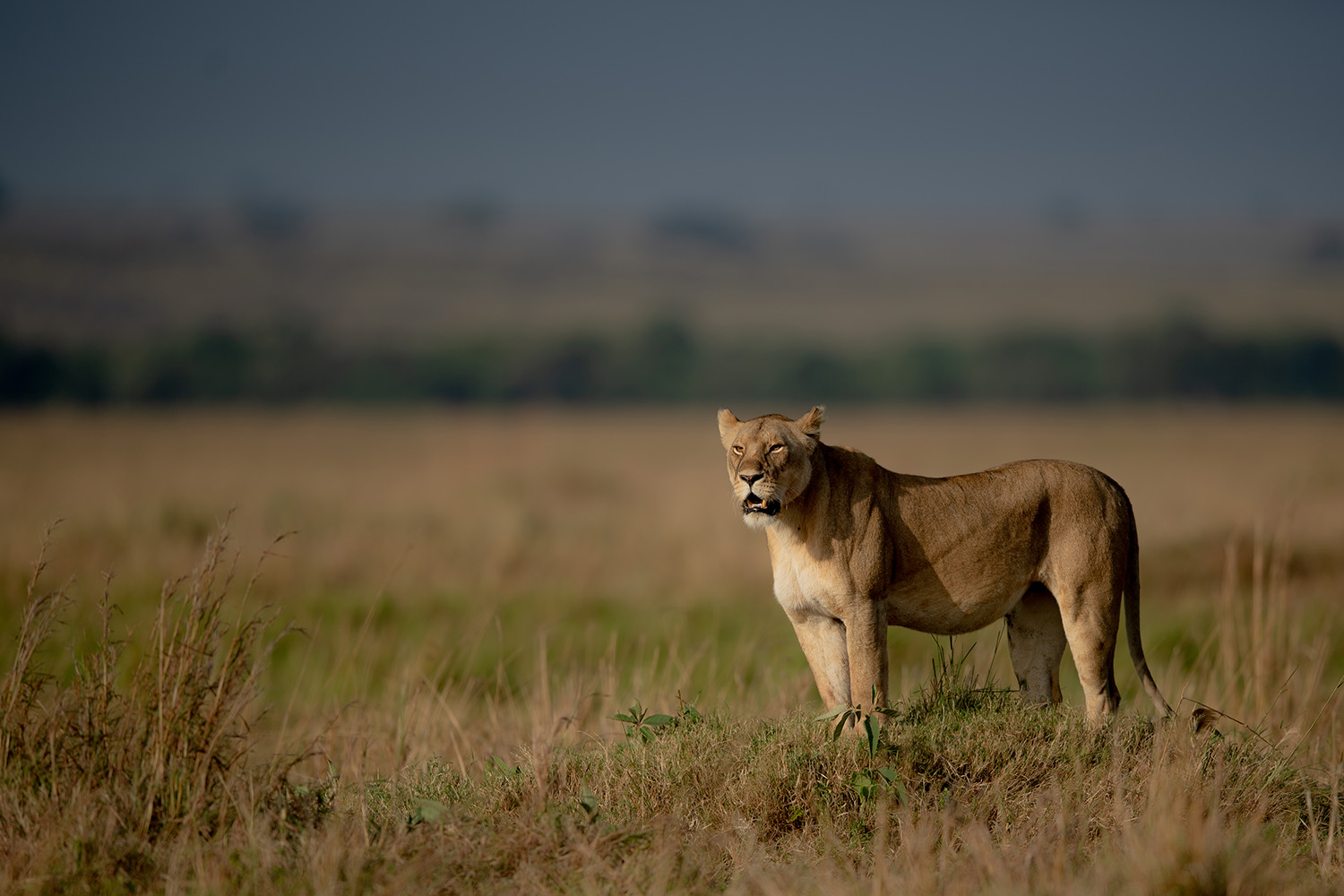
So few photographers use their white balance nowadays. It’s one of my favourite tools to warm or cool down an image. There was a dark blue hue behind the lion as I took the image, so I set the kelvin down to 5000 to cool down the image and underexposed the image by 1/3.
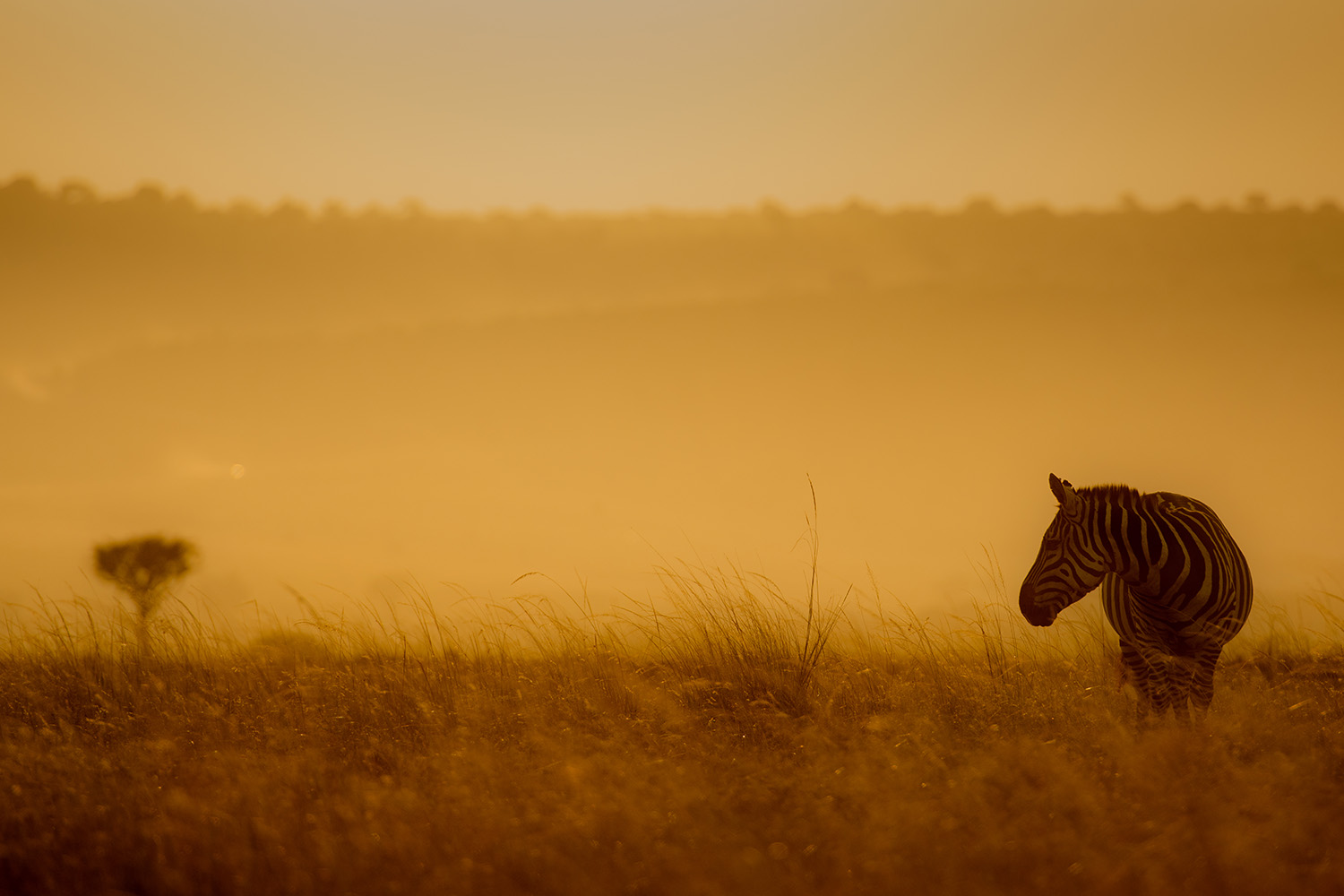
Dust and shooting into setting light can create some beautiful shades of orange, and I never get tired of interesting light. The zebra created the contrast I was looking for and the small classic Mara tree rounds the image off. Remember to focus on the subject or you’ll likely blow out your image. [f.3.5 ISO 100 1/1250]
I hope you enjoyed this week from the Mara and I will leave you with some tips for shooting in this extraordinary destination:
• Always have your camera ready. The animals are everywhere, and you never know what can happen. F-stop 4, and a decent shutter speed is always a starter before I get into the vehicle.
• Also visit outside the Migration. Less cars and shorter grass, thanks to the wildebeest, leave you with incredible photographic opportunities. Remember the cats don’t migrate with the wildebeest and as there is less prey around, you’re more likely to see them hunting. Expect a number of new lion litters in November/December.
• Composure. Often we see an incredible scene, pick up our cameras and start to fire off 50 shots. Take 2-3 photos, get the scene and then make sure the exposure is correct and adjust any settings. The light and landscape constantly change in this dynamic reserve.
Happy shooting out there – Graham
Note from the Editor: In between taking these beautiful images, Graham and his wife Nicky spent a week with us celebrating their anniversary.
TAGGED WITH: Wildlife, Photography, Maasai Mara, People, Travel, Safari, Wildlife Photography, the great migration



COMMENTS (1)
Penny Skehan
August 21, 2018Fabulous photos. Thank-you for sharing them.
REPLY